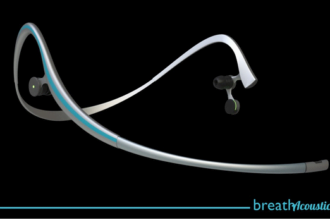 One of the biggest challenges facing health care providers today when it comes to engaging patients is RELEVANCE…or more specifically the lack of it. I say “engaging” because any one presenting in the doctor’s office, visiting a patient portal or using a smart phone health app is already engaged in their health. By engaged I mean they are already cognitively involved in their health to a certain exte
One of the biggest challenges facing health care providers today when it comes to engaging patients is RELEVANCE…or more specifically the lack of it. I say “engaging” because any one presenting in the doctor’s office, visiting a patient portal or using a smart phone health app is already engaged in their health. By engaged I mean they are already cognitively involved in their health to a certain exte
 One of the biggest challenges facing health care providers today when it comes to engaging patients is RELEVANCE…or more specifically the lack of it. I say “engaging” because any one presenting in the doctor’s office, visiting a patient portal or using a smart phone health app is already engaged in their health. By engaged I mean they are already cognitively involved in their health to a certain extent with an end point or goal in mind, i.e., learn something, do something or decide about something. Face it, who do you know that goes to the doctor’s office just for fun? There is always a reason — and behind that reason is cognition, e.g., intellectual engagement.
One of the biggest challenges facing health care providers today when it comes to engaging patients is RELEVANCE…or more specifically the lack of it. I say “engaging” because any one presenting in the doctor’s office, visiting a patient portal or using a smart phone health app is already engaged in their health. By engaged I mean they are already cognitively involved in their health to a certain extent with an end point or goal in mind, i.e., learn something, do something or decide about something. Face it, who do you know that goes to the doctor’s office just for fun? There is always a reason — and behind that reason is cognition, e.g., intellectual engagement.
Fact – 82% of U.S. adults see their personal physician at least once a year (avg. is 3 visits/year) and yet experts tell us that most of us are still unengaged in our health.
Relevance Is Important in the Doctor’s Office
Now imagine a 55 years old person going into their doctor’s office because of a persistent headache and back pain. Before deciding to see the doctor they probably talked with their family or friends about their concerns. Maybe they went online to research their concerns before making a doctor’s appointment. Now imagine that same person in the exam room and all the doctor wants to talk about is the patient’s risk for colon cancer and the need for an overdue colonoscopy. Bam. Instant patient disengagement.
To be sure, the clinician in this scenario is legitimately trying to “engage” the patient by getting them to comply with a recommended, evidence-based screening. But there is a disconnect in this scenario between what the person (patient) wants to talk about during their office visit…and what the clinician wants’ to discuss. The disconnect? A lack of relevance. What the clinician wants to talk about is not nearly as relevant to the patient as it is to the clinician and that’s a problem.
Here’s another example of a common physician-patient disconnect. Using the same scenario, imagine that the person/patient concerns regarding their headache and back pain have to do with how these symptoms are affecting their vision (ability to drive), their gait, their ability to sleep at night and their appetite. For the person/patient, their quality of life is suffering as a consequence of their complaints.
Now consider that physicians – at least those with a physician- or disease-oriented style of communicating with patients (which make up 2/3s of primary care physician) – will focus during the medical exam on the biomedical causes of the patient’s complaints rather than the quality of life issues of concern to the person/patient. Also realize that most patients are now very good or willing to interrupt or correct their physicians. Bam. Bam. Instant patient disengagement.
Once again, while what the clinician focuses on may be the cause of the patient’s problems, it’s not relevant to the patient that wants to know how the doctor will fix their loss of vision, gait, sleeping and appetite.
This same scenario is played out every day in physician offices across the country. Disagreement over the visit agenda isn’t the only reason for communication disconnects or gaps. Lack of physician-patient agreement is also common when it comes to:
• What’s wrong
• Diagnostic tests needed
• Accuracy of the diagnosis
• Severity of the diagnosis
• Cause of diagnosis
• Appropriateness of the recommended treatment
• Expected efficacy of the recommended treatment
• Need for a specialist referral
Relevance Is Just As Important To Patient Portals
Finally, imagine that the Electronic Medical Records and Open Notes detailing the above scenarios are available to the person/patient via a patient portal. Imagine also that the HIT folks used the patient’s diagnosis and doctor’s notes to “trigger” personalized, tailored health information for the patient. That means that the patient is sent messages about this risk of colon cancer, information about diet and colon health and a coupon for a colonoscopy.
Now ask yourself…how in God’s name is the information provided via the patient portal in this scenario relevant or engaging from the person/patient perspective? Explain to me how the information in the EMR and Open Notes is relevant to the patient if its ignored? It’s not…and people/patients need only look at their patient portal once to figure that out.
The Takeaway?
HIT’s current attempts at patient engagement remind me of the parable of “putting old wine (same old information) into new wine skins (patient portals).” The wine’s going to go bad and few will drink it. The solution is to add relevant, “patient-centered” wine into the new wine skins.
Patient engagement is not an HIT challenge…it is a physician-patient communication challenge. As such, the role of the clinician is to engage patients…but rather to be engaging or at the very least avoid disengaging patients.
That’s my opinion. What’s yours?
(patient portal / shutterstock)







